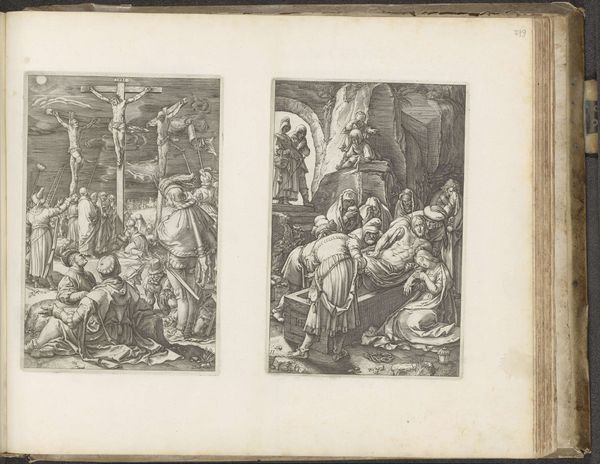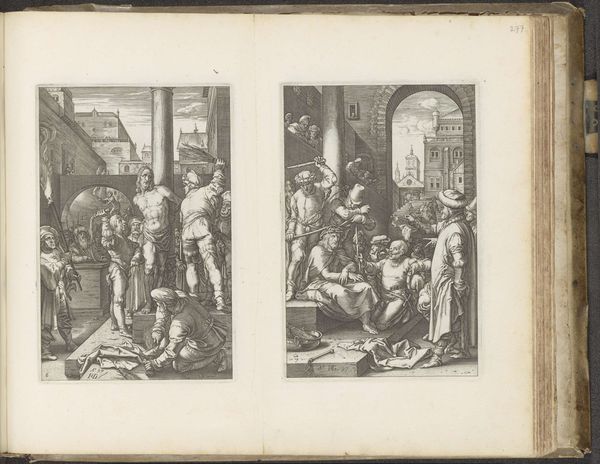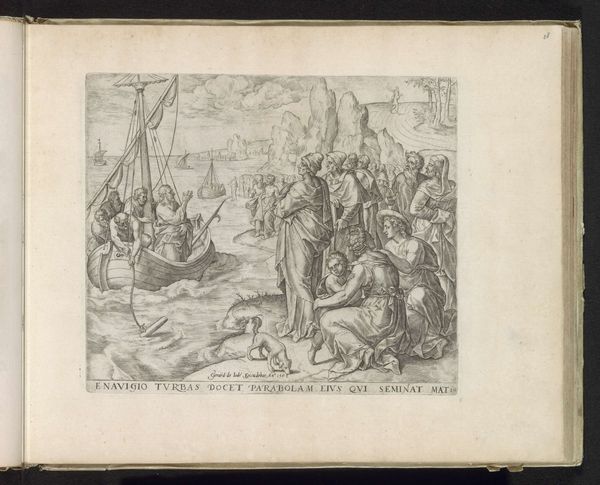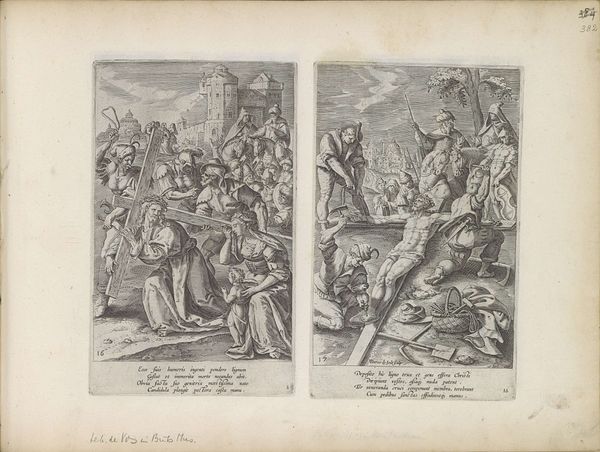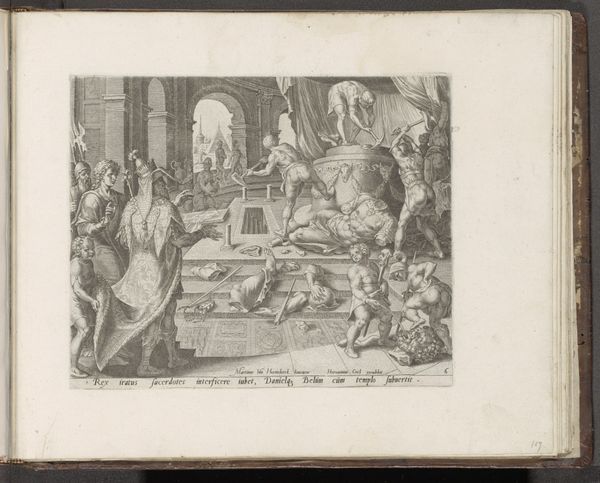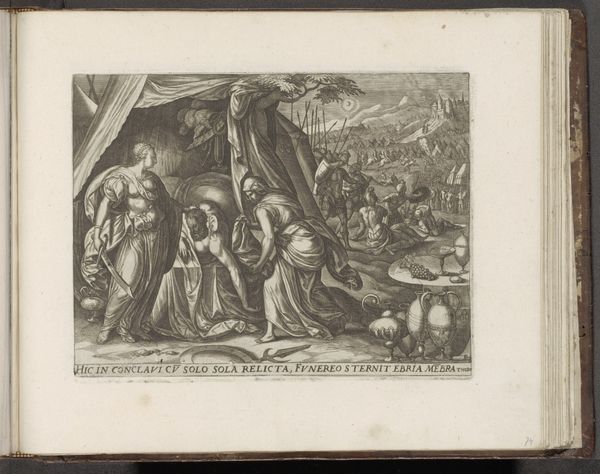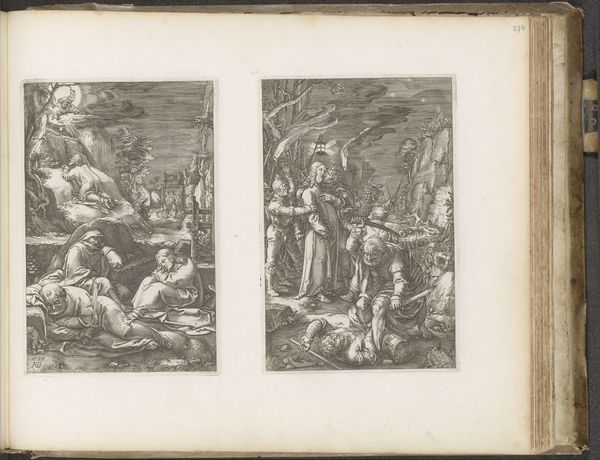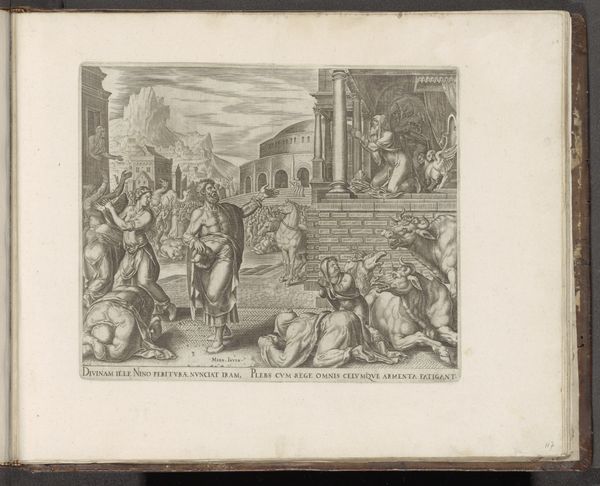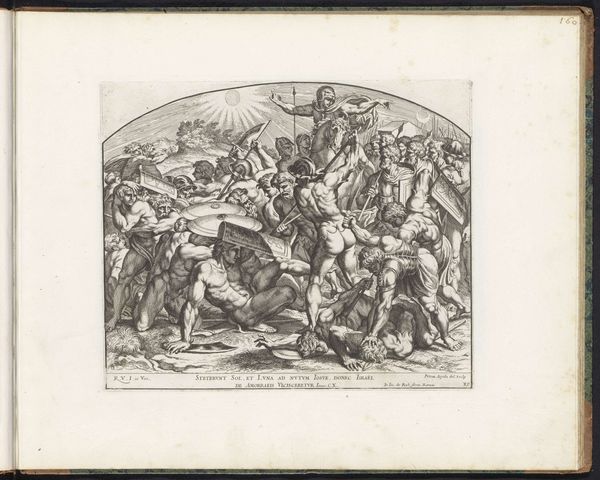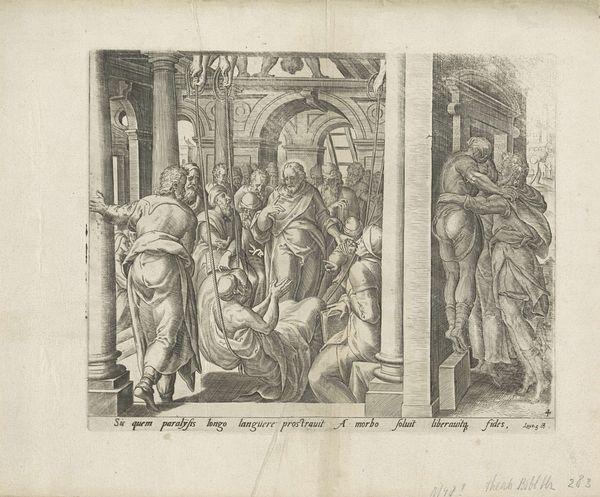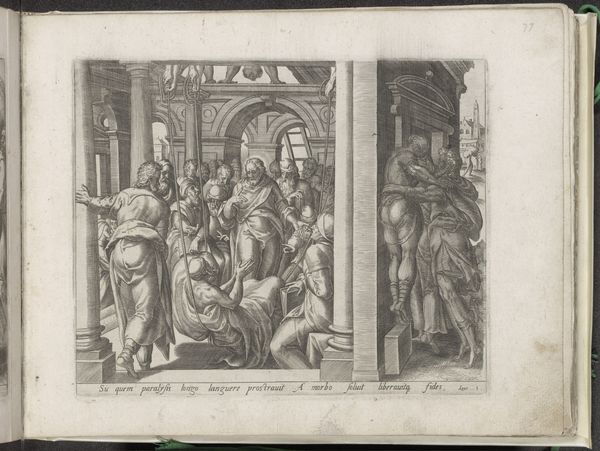
print, paper, ink, engraving
#
narrative-art
# print
#
mannerism
#
figuration
#
paper
#
ink
#
history-painting
#
engraving
Dimensions: height 200 mm, width 133 mm, height 200 mm, width 134 mm
Copyright: Rijks Museum: Open Domain
Editor: This is a combined print called "Christus aan het volk getoond (Ecce Homo) / Kruisdraging," dating between 1597 and 1654. It’s an engraving in ink on paper. The density of the crowd and the expressions on their faces create a feeling of immense social pressure. What strikes you when you look at this piece? Curator: The juxtaposition of “Ecce Homo” with the “Kruisdraging,” or Christ Carrying the Cross, is what initially captures my attention. Think about the historical context: prints like these were tools of religious dissemination, particularly during the Counter-Reformation. How does this pairing challenge or reinforce existing power structures and social norms of the time? Editor: I see. The Ecce Homo scene positions Christ as a spectacle, vulnerable to public opinion. The carrying of the cross amplifies this sense of suffering and public humiliation. Curator: Precisely! Now consider the depiction of the crowd. Is it a unified mass or a collection of distinct individuals? Are there any figures that stand out, and if so, what might they represent in relation to themes of power, persecution, and marginalization? Editor: Some figures seem more sympathetic, others cruel. The architectural elements also feel oppressive, contributing to that feeling. Curator: Indeed. The architecture cages the scene. How might the artist be commenting on the role of institutions in perpetuating injustice or upholding social hierarchies? Remember, prints circulated widely, reaching diverse audiences. Editor: That’s a strong point. It made me realize how such artworks influenced the masses with religious ideologies of suffering and subjection. Curator: Exactly. And remember, this period was rife with religious and political tensions. Analyzing this work through the lens of social and power dynamics offers invaluable insight into the period. Editor: Thank you, seeing how art engages with cultural dynamics really does amplify its meaning and its connection with our contemporary views. Curator: And that connection, that conversation, is precisely where the power of art resides.
Comments
No comments
Be the first to comment and join the conversation on the ultimate creative platform.
